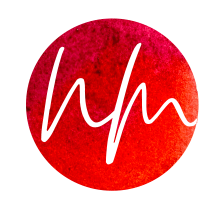I’ve done yoga since college—when I need some PE credits (that were not dance classes) at my liberal arts school. It wasn’t until about my five years ago that my practice grew steady and more serious. At that point, I was familiar with a random smattering of Sanskrit terms. I enjoyed the snippets of philosophy that my favorite teachers shared at the beginning of classes—and I craved a more comprehensive understanding that would tie it all together. To that end, I decided that pursuing a Yoga Teacher Training (YTT) program would be my 40th birthday gift to myself. (At the time, I had zero intentions of teaching.) During that initial YTT and the additional mentor-led and my personal yoga studies since, I’ve read—and reread—many important classical texts, including various versions of the Bhagavad Gita and the Yoga Sutras, the Hatha Yoga Pradipika, and more.
I’ve also found my way to a bunch of (mostly) what one might call “secondary” sources that have become my go-to books because they deliver information in a way that serves both newbies and more experienced practitioners. I keep these books in a pile by my bed, for frequent referencing. Some, I buy repeatedly as gifts for yoga-curious friends. I think they’re great, and I think you might too.
The Yamas & Niyamas: Exploring Yoga’s Ethical Practice by Deborah Adele
Non-violence (ahimsa). Non-attachment (aparigraha). Truth (satya). Discipline (tapas). This book is a wonderfully accessible primer to the yamas and niyamas, the ethical principles that underlie the practice of yoga.
The Yoga Sutras of Patanjali, translation and commentary by Sri Swami Satchidananda
Of all the traditional yoga texts, the sutras (“thought threads”)—written 4,000+ years ago by a sage named Patanjali to outline the yoga’s ethical principles of yoga, meditation, postures, and advice for skillfully navigating life—feels most accessible to me. My favorite sutra (1.33): translates to this: “By cultivating attitudes of friendliness toward the happy, compassion for the unhappy, delight in the virtuous, and disregard toward the wicked, the mind-stuff retains its undisturbed calmness.” Wicked!
Living the Sutras: A Guide to Wisdom Beyond the Mat by Kelly DiNardo and Amy Pearce-Hayden
DiNardo and Pearce-Hayden take the sutras’ advice for living a yogic life one step further for the modern, just-diving-in yoga practitioner, explaining Patanjali’s bits of wisdom in modern terms and offering self-reflective prompts for bringing them in one’s everyday life.
Myths of the Asanas by Alanna Kaivalya & Arjuna van de Kooij
A+ storytelling about the deities and sacred animals behind yoga poses. I appreciate it for the context behind some of my favorite postures, like garudasana (eagle!)—and because it’s a fun one to share with kids. My boys’ favorite story was the one in which Virabhadra—a fierce warrior the god Shiva creates from one of his dreadlocks—burst up through the ground, uninvited, into a fancy party, draws his sword and chops off the head of his lover’s father.
Revolution of the Soul by Seane Corn
Part memoir, part philosophy-primer-appropriate-for-practitioners-at-all-stages, this book—by a very well-known American teacher—covers yogic concepts in ways worth rereading a million (OK, many) times over. Plus, Seane Corn is humble and funny and committed to growing and doing better as a human every day. Total inspiration.
Wanderlust: A Modern Yogi’s Guide to Discovering Your Best Self by Jeff Krasno
This book, brought to you by the peeps behind the Wanderlust yoga festival, quick-dips into philosophy in ways that might entice you to learn more. It’s also packed with some great essays, sequences, and playlists from high-profile teachers, which are fun. It’s also designed in a visually interesting way that probably speaks to my former magazine editor self.
The Yoga Anatomy Coloring Book by Kelly Sollaway
Because if you’re looking to start getting a better understanding of alignment and anatomy, you’re best off using an approach that feels fun. And coloring is calming, am I right? (PS: Get some colored pencils. Crayons are too big and bulky for all those tiny bones in your feet.)
The Yoga Toolbox by Joseph and Lilian Le Page
It’s pricey but oh-so-very comprehensive, with a dedicated two-sided card/page for every pose that offers detailed instructions for teaching (or mastering) or learning various postures, covering a number of variations and modifications, explains symbolism and meaning, and more, more, more.

